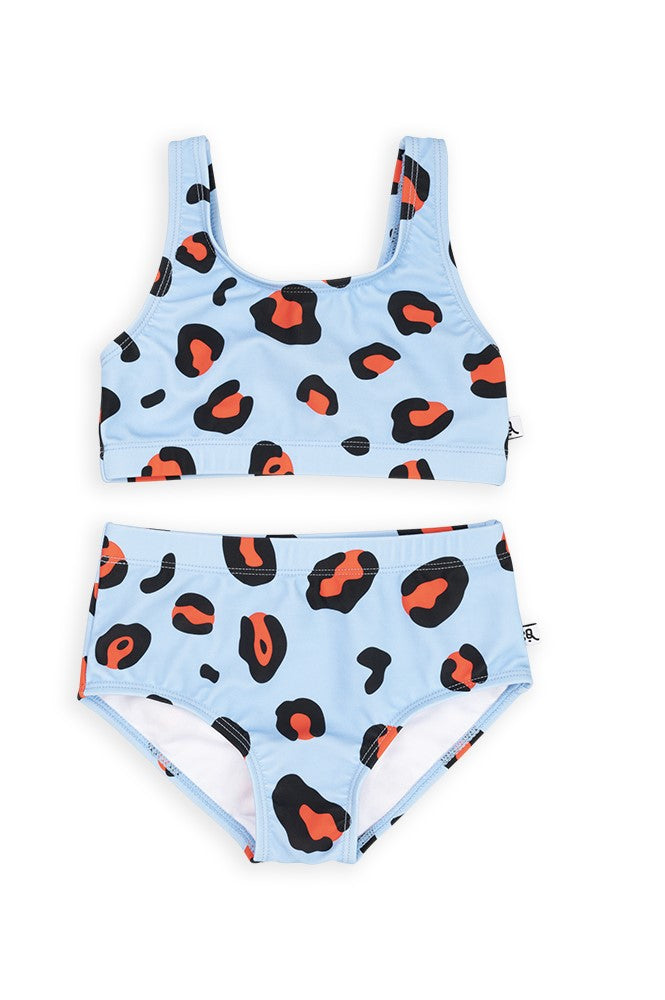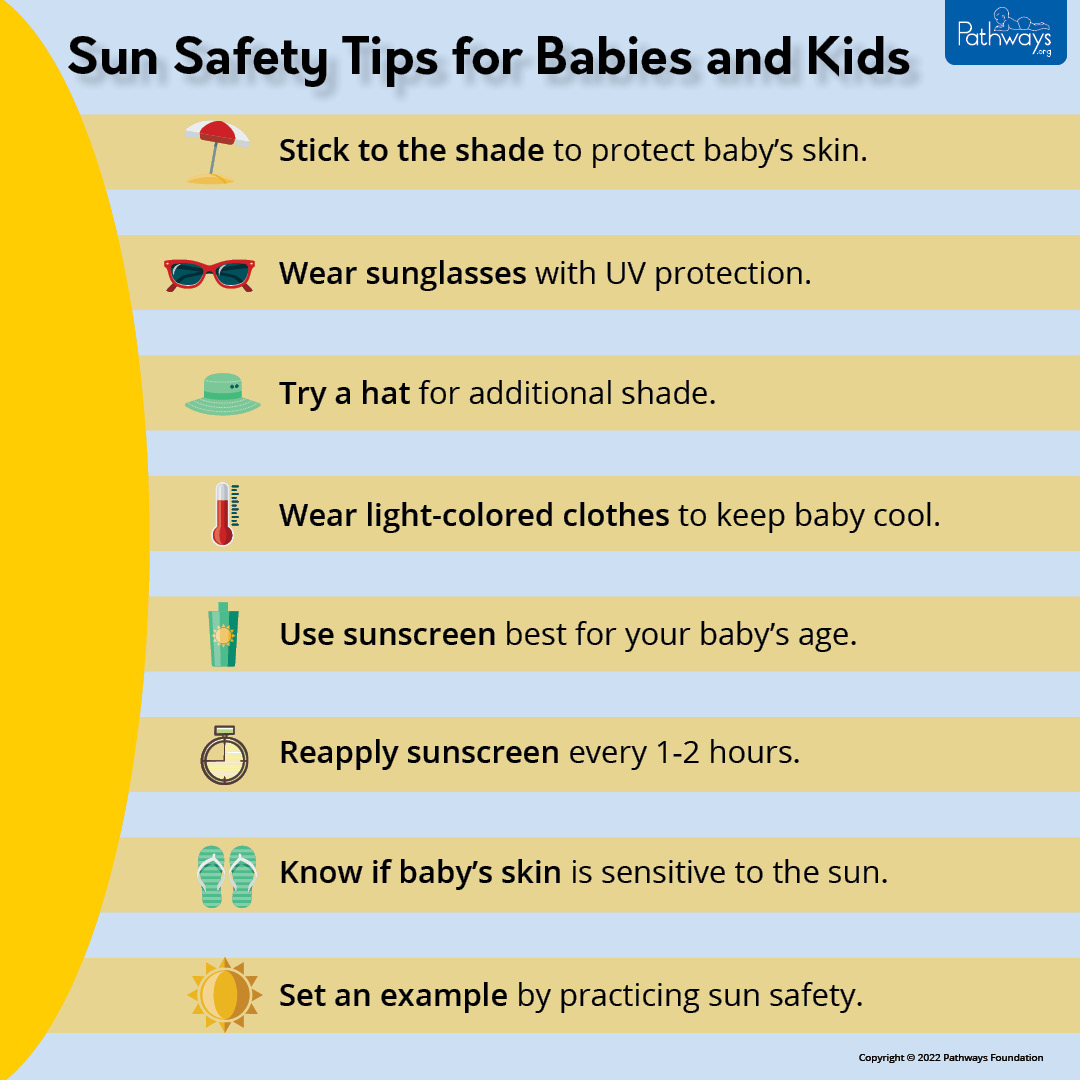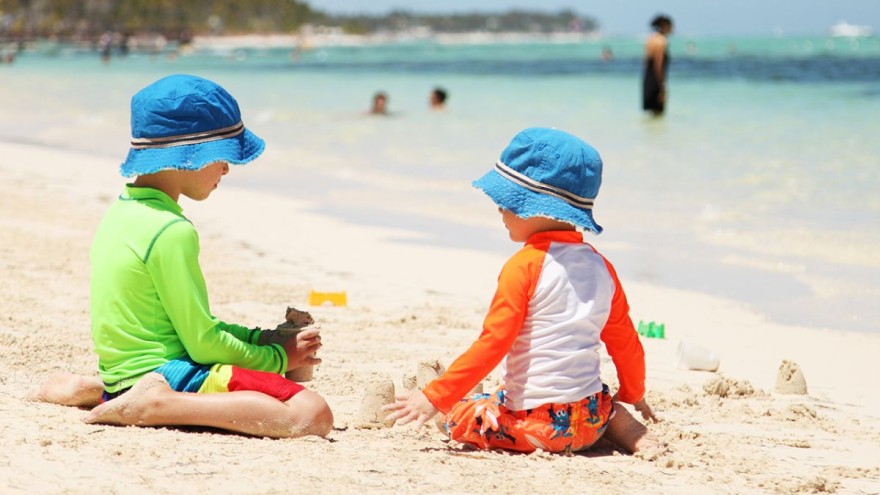Summer clothing for kids can offer some protection from the sun, depending on the fabric and design. Lightweight, long-sleeved shirts and hats are particularly effective in shielding delicate skin.
Summer brings sunny days, making it essential to prioritize sun protection for kids. Children’s skin is often more sensitive and vulnerable to UV rays. Choosing the right summer clothing can significantly reduce the risk of sunburn and long-term skin damage.
Fabrics with a tight weave, darker colors, and special UV protection ratings provide better defense against harmful rays. Along with clothing, applying sunscreen and encouraging kids to seek shade will enhance their safety. Parents should select outfits that combine comfort and protection, ensuring kids enjoy their outdoor activities without the worry of sun exposure.
Table of Contents
The Importance Of Sun Protection For Kids
Sun protection is crucial for children. Their skin is more sensitive than adults’. Proper clothing can shield them from harmful UV rays. Parents must prioritize sun safety during outdoor activities.
Risks Of Uv Exposure
Exposure to UV rays can lead to serious health issues. Here are some risks:
- Sunburn: Red, painful skin that can blister.
- Skin Damage: Premature aging and skin discoloration.
- Eye Damage: UV rays can harm children’s eyes.
- Weakened Immune System: Increased risk of infections.
Children often play outside for long periods. This increases their risk of UV exposure. Parents must take precautions to protect their kids.
Long-term Health Implications
Long-term exposure to UV rays can cause serious problems. Consider these implications:
| Health Issue | Description |
|---|---|
| Skin Cancer | Higher risk of melanoma and other skin cancers. |
| Eye Problems | Cataracts and other vision issues later in life. |
| Premature Aging | Wrinkles and age spots appear earlier. |
Protecting kids from the sun is a long-term investment. Good habits formed early can lead to healthier futures.
Understanding Uv Protective Clothing
Summer clothing for kids plays a vital role in sun protection. UV protective clothing helps shield young skin from harmful rays. This section will explore what makes clothing UV protective and explain UPF ratings.
What Makes Clothing Uv Protective?
Several factors contribute to the UV protection of clothing:
- Fabric Type: Tight-weave fabrics block more UV rays.
- Color: Darker colors absorb more UV radiation.
- Weight: Heavier fabrics tend to offer better protection.
- Moisture: Wet clothing can allow more UV rays to penetrate.
Choosing the right clothing can significantly reduce UV exposure. Look for items specifically labeled as UV protective.
Upf Ratings Explained
UPF stands for Ultraviolet Protection Factor. This rating indicates how much UV radiation a fabric allows to reach the skin. Higher UPF ratings mean better protection.
| UPF Rating | UV Protection Level |
|---|---|
| 15-24 | Good protection |
| 25-39 | Very good protection |
| 40-50+ | Excellent protection |
Always check the UPF rating before buying summer clothing. Aim for items with a rating of 30 or higher for the best protection.
Summer Clothing Essentials For Children
Summer is here, and kids need the right clothing for sun protection. Choosing the right summer clothing is important for their safety and comfort. Light fabrics, bright colors, and protective gear can keep them safe from harmful UV rays.
Choosing The Right Fabrics
Selecting the right fabrics can make a big difference. Here are some tips:
- Lightweight Materials: Choose breathable fabrics like cotton or linen.
- UPF Ratings: Look for clothes with a high Ultraviolet Protection Factor.
- Loose-Fitting: Loose clothing allows air to circulate, keeping kids cool.
- Dark Colors: Dark fabrics absorb UV rays better than light colors.
Check this table for more information:
| Fabric Type | Features | UPF Rating |
|---|---|---|
| Cotton | Soft and breathable | UPF 5-10 |
| Linen | Lightweight and cool | UPF 5-10 |
| Polyester | Quick-drying and durable | UPF 15-30 |
| Specialty Fabrics | Designed for sun protection | UPF 30+ |
Must-have Items For Sun Safety
Equip your child with essential items for sun safety. Here is a list of must-have items:
- Hats: Wide-brimmed hats shield the face and neck.
- Sunglasses: UV-blocking sunglasses protect young eyes.
- Rash Guards: Long-sleeve rash guards offer extra coverage.
- Lightweight Cover-Ups: Use cover-ups for added protection.
- Swimwear: Choose swimwear with UPF protection.
These clothing essentials keep your child safe during outdoor activities. Enjoy summer while staying protected!

Credit: milimilu.com
Comparing Regular And Upf-enhanced Clothing
Choosing the right summer clothing for kids is essential for sun protection. Regular clothing and UPF-enhanced clothing differ significantly in their ability to shield against harmful UV rays. This section explores these differences in detail.
Material Differences
Regular clothing and UPF-enhanced clothing use different materials. Here’s a quick breakdown:
| Type of Clothing | Material | Typical Uses |
|---|---|---|
| Regular Clothing | Cotton, polyester, blends | Everyday wear, casual outings |
| UPF-Enhanced Clothing | Specialized fabrics, tightly woven | Outdoor activities, beach trips |
Regular clothing can be lightweight and breathable. It may feel comfortable but often lacks UV protection. UPF-enhanced clothing is designed with specific materials to block UV rays.
Effectiveness In Blocking Uv Rays
Not all fabrics provide the same level of UV protection. Here’s how they compare:
- Regular Clothing:
- UPF rating is often low.
- May allow harmful UV rays to pass through.
- UPF-Enhanced Clothing:
- UPF rating can be 15 to 50+.
- Blocks 93% to 98% of UV rays.
Choosing UPF-enhanced clothing offers better sun protection. Parents should consider UPF ratings when selecting summer attire for kids. This ensures their skin remains safe during outdoor play.
The Science Behind Upf Clothing
UPF clothing helps protect kids from harmful UV rays. It stands for Ultraviolet Protection Factor. This rating shows how much UV radiation can pass through the fabric. Choosing UPF clothing can make outdoor fun safer.
How Upf Clothing Is Tested
Testing UPF clothing is a detailed process. Here are the key steps:
- Fabric samples are exposed to UV light.
- The amount of UV radiation that passes through is measured.
- Results determine the UPF rating.
Higher UPF ratings mean better protection. For example:
| UPF Rating | Protection Level |
|---|---|
| 15-24 | Good Protection |
| 25-39 | Very Good Protection |
| 40+ | Excellent Protection |
Technological Advances In Fabric
Recent advancements improve UPF clothing. Innovative materials enhance sun protection. Here are some examples:
- Microfiber: Lightweight and blocks UV rays effectively.
- Tightly woven fabrics: Less space for UV rays to pass through.
- Chemical treatments: Added to fabrics for extra UV protection.
These technologies make summer clothing safer and more comfortable for kids. Parents can choose stylish options without sacrificing protection.

Credit: pathways.org
Practical Tips For Dressing Kids In Summer
Summer brings fun but also strong sun rays. Protecting kids while keeping them comfortable is essential. Here are some practical tips for dressing your little ones in summer.
Layering Strategies
Layering is a smart way to keep kids safe from the sun. Use lightweight fabrics that breathe well. Here are some effective layering tips:
- Lightweight Shirts: Choose long-sleeved shirts made of cotton.
- Sun-Protective Clothing: Look for clothes with UPF ratings.
- Light Jackets: A light jacket can add protection without heat.
- Hats: Wide-brimmed hats shield faces and necks.
Comfort Vs. Protection
Finding a balance between comfort and sun protection is key. Kids need to feel good while staying safe.
| Clothing Item | Comfort Level | Protection Level |
|---|---|---|
| Shorts | High | Low |
| Lightweight Pants | Medium | Medium |
| Sun Hats | High | High |
| Sunglasses | High | High |
Choose clothing that feels good and offers sun protection. Always check for UPF ratings on kids’ clothes. Encourage kids to wear sunglasses for eye protection.
Integrating Sun Protection Into Kids’ Fashion
Summer clothing for kids can be both stylish and protective. Parents want their children to look good and stay safe from the sun. Integrating sun protection into their fashion choices is essential. Here are some tips to keep your kids safe while looking trendy.
Stylish Yet Safe
Choosing the right clothing can make a big difference. Look for fabrics with a UPF rating. This rating shows how well the fabric blocks UV rays. Here are some tips for stylish sun-safe clothing:
- Choose long-sleeve shirts and pants.
- Look for bright colors and bold patterns.
- Opt for lightweight and breathable materials.
Consider clothing designed specifically for sun protection. Brands now offer fun styles that kids love. Kids can express their personality while staying safe.
Incorporating Hats And Sunglasses
Hats and sunglasses add extra protection. They complete any summer outfit. Here are some tips for choosing the right accessories:
| Accessory | Features |
|---|---|
| Hats | Wide brims offer more shade. Look for breathable materials. |
| Sunglasses | Pick sunglasses with 100% UV protection. Fun colors attract kids. |
Encouraging kids to wear these accessories helps build good habits. They’ll learn the importance of sun safety while being fashionable.
Sunscreen And Clothing: A Dual Approach
Summer brings fun and outdoor activities for kids. However, protecting their skin from harmful UV rays is essential. Combining sunscreen with protective clothing offers a strong defense. This dual approach ensures your child stays safe while enjoying the sun.
Understanding Sunscreen Efficacy
Sunscreen is vital for protecting skin from UV damage. Here are key points about its effectiveness:
- SPF Rating: Choose a sunscreen with at least SPF 30.
- Water Resistance: Opt for water-resistant formulas for active kids.
- Application: Apply sunscreen 15 minutes before sun exposure.
- Reapplication: Reapply every two hours, or after swimming.
Remember to cover all exposed skin. Don’t forget areas like ears, nose, and feet.
Complementary Use With Protective Clothing
Protective clothing adds another layer of defense. Here’s how to enhance sun safety:
| Clothing Type | Benefits |
|---|---|
| Long-Sleeve Shirts | Cover arms and reduce sun exposure. |
| Wide-Brimmed Hats | Shields face, neck, and ears from the sun. |
| Sunglasses | Protect eyes from harmful UV rays. |
| Lightweight Pants | Protect legs while keeping cool. |
Look for clothing with a high UPF rating. UPF ratings indicate how well the fabric blocks UV rays. Choose fabrics that are breathable and lightweight for comfort.
Using both sunscreen and protective clothing creates a strong barrier. This approach maximizes sun protection for your children.
Myths And Misconceptions About Sun Protective Clothing
Many parents have questions about sun protective clothing for kids. Misunderstandings can lead to poor choices. Let’s clear up some common myths surrounding this important topic.
Debunking Common Myths
Several myths can confuse parents. Here are some of the most common:
- Myth 1: All clothing blocks UV rays.
- Myth 2: Dark colors offer better protection than light colors.
- Myth 3: Once applied, sunscreen is enough; clothing isn’t needed.
- Myth 4: Sun protective clothing is only for the beach.
These myths can mislead parents about sun safety. Understanding the facts is crucial for protecting children.
The Truth About Color And Coverage
Color and coverage matter a lot in sun protection. Here’s what you need to know:
| Color | Protection Level |
|---|---|
| Dark Colors | Higher UV protection |
| Light Colors | Lower UV protection |
| Patterned Fabrics | Can offer more protection |
Coverage also plays a vital role. Long sleeves and pants offer better protection. A wide-brimmed hat shields the face and neck. These choices can help prevent sunburn.
Parents should not rely solely on sunscreen. Sun protective clothing adds an extra layer of safety. Choose the right fabrics and styles for full sun protection.
The Role Of Parents And Guardians
Parents and guardians play a crucial part in protecting kids from the sun. They can teach children about sun safety and the importance of wearing proper clothing. Understanding how to stay safe in the sun can help kids enjoy summer activities without harm.
Educating Kids On Sun Safety
Education is key to sun safety. Parents should talk to kids about the sun’s effects. Here are some important points to cover:
- Explain how UV rays can cause skin damage.
- Discuss the benefits of wearing protective clothing.
- Teach kids the importance of applying sunscreen.
- Remind them to seek shade during peak sun hours.
Make sun safety fun. Use games or stories to engage kids. This approach helps them remember important lessons.
Setting A Good Example
Children learn by watching adults. Parents should model sun-safe behavior. Here are ways to set a good example:
- Wear hats and sunglasses outdoors.
- Apply sunscreen before going outside.
- Choose lightweight, long-sleeved clothing.
- Plan activities in shaded areas.
By practicing these habits, parents show kids how to stay safe. This creates a positive environment for learning sun safety.
Sun Safety Beyond Clothing
Summer clothing for kids helps protect against sun damage. Yet, clothing alone isn’t enough. Sun safety includes various strategies. Parents must consider all aspects to keep kids safe.
Seeking Shade And Planning Outdoor Time
Finding shade is crucial for sun safety. Encourage kids to play in shaded areas. Here are some tips for planning outdoor activities:
- Schedule playtime in the early morning or late afternoon.
- Use umbrellas or canopies at parks.
- Choose shaded locations for picnics.
- Look for natural shade from trees.
Teach children to enjoy outdoor fun while staying safe. Explain the importance of taking breaks in the shade. Create a routine that includes shade time.
Hydration And Heat Illness Prevention
Staying hydrated is vital in hot weather. Kids often forget to drink enough water. Here are effective hydration tips:
- Offer water regularly, even if kids aren’t thirsty.
- Include hydrating snacks like fruits and veggies.
- Limit sugary drinks that can cause dehydration.
Monitor kids for signs of heat illness. Symptoms include:
- Excessive sweating
- Weakness or fatigue
- Nausea or dizziness
Teach kids to recognize these signs. Quick action can prevent serious issues.

Credit: www.amazon.com
Affordability And Accessibility Of Sun Protective Clothing
Sun protective clothing for kids is essential. It shields delicate skin from harmful UV rays. Parents often worry about costs. Finding affordable options is crucial for everyone.
Cost Considerations
The price of sun protective clothing can vary. Here are some factors to consider:
- Material: High-quality fabrics often cost more.
- Brand: Popular brands may have higher prices.
- Design: Unique designs can increase costs.
- Size: Larger sizes might come with a higher price tag.
Despite these factors, finding affordable options is possible. Many brands offer budget-friendly choices without sacrificing quality.
Finding Budget-friendly Options
Parents can explore several strategies to save money:
- Shop during sales and clearance events.
- Look for discount codes online.
- Check local thrift stores for gently used items.
- Consider buying off-season for lower prices.
Many stores provide sun protective clothing at various price points. Here’s a quick comparison:
| Store | Price Range | Sun Protection Level |
|---|---|---|
| Brand A | $15 – $30 | UPF 50+ |
| Brand B | $10 – $25 | UPF 30+ |
| Brand C | $5 – $20 | UPF 50+ |
Keep these tips in mind. Protecting your child from the sun doesn’t have to break the bank.
Future Trends In Kids’ Sun Protective Wear
As awareness of sun safety grows, the demand for kids’ sun protective wear is rising. Parents want the best for their children. Innovations in materials and designs are on the horizon. These advancements aim to keep kids safe and stylish.
Innovations On The Horizon
New technologies are changing how we think about sun protection. Here are some exciting innovations:
- UPF Fabrics: Enhanced Ultraviolet Protection Factor (UPF) ratings.
- Smart Textiles: Fabrics that change color with UV exposure.
- Biodegradable Options: Eco-friendly materials that protect and decompose.
Brands are investing in research. They aim to create better sun protective clothing. Parents will have more choices for their kids.
The Growing Market For Sun-safe Apparel
The market for sun-safe apparel is expanding quickly. Parents prioritize their children’s health. Here are key factors driving this growth:
| Factor | Details |
|---|---|
| Health Awareness | Increased education about skin cancer risks. |
| Fashion Trends | Stylish designs that appeal to kids. |
| Parental Demand | Parents seeking effective sun protection solutions. |
Brands are responding to this demand. They create fun and protective clothing. Expect to see more options in stores soon.
Frequently Asked Questions
Does Lightweight Fabric Protect From Uv Rays?
Lightweight fabrics can protect against UV rays if they have a high Ultraviolet Protection Factor (UPF) rating.
What Is Upf In Summer Clothing?
UPF stands for Ultraviolet Protection Factor, indicating how much UV radiation can penetrate the fabric.
Should Kids Wear Hats In Summer?
Yes, wide-brimmed hats provide extra protection for kids’ faces and necks from harmful sun exposure.
Can Swimwear Block Sun Exposure?
Yes, many swimwear options are designed with UPF protection to shield kids from sun damage while swimming.
How To Choose Sun-safe Kids’ Clothing?
Look for garments with a high UPF rating, tightly woven fabric, and long sleeves for optimal sun protection.
Conclusion
Choosing the right summer clothing for kids is crucial for sun protection. Lightweight fabrics with UV protection can help shield their delicate skin. Always prioritize hats and sunglasses alongside appropriate clothing. By making informed choices, you can ensure your children stay safe and comfortable while enjoying their outdoor adventures this summer.







